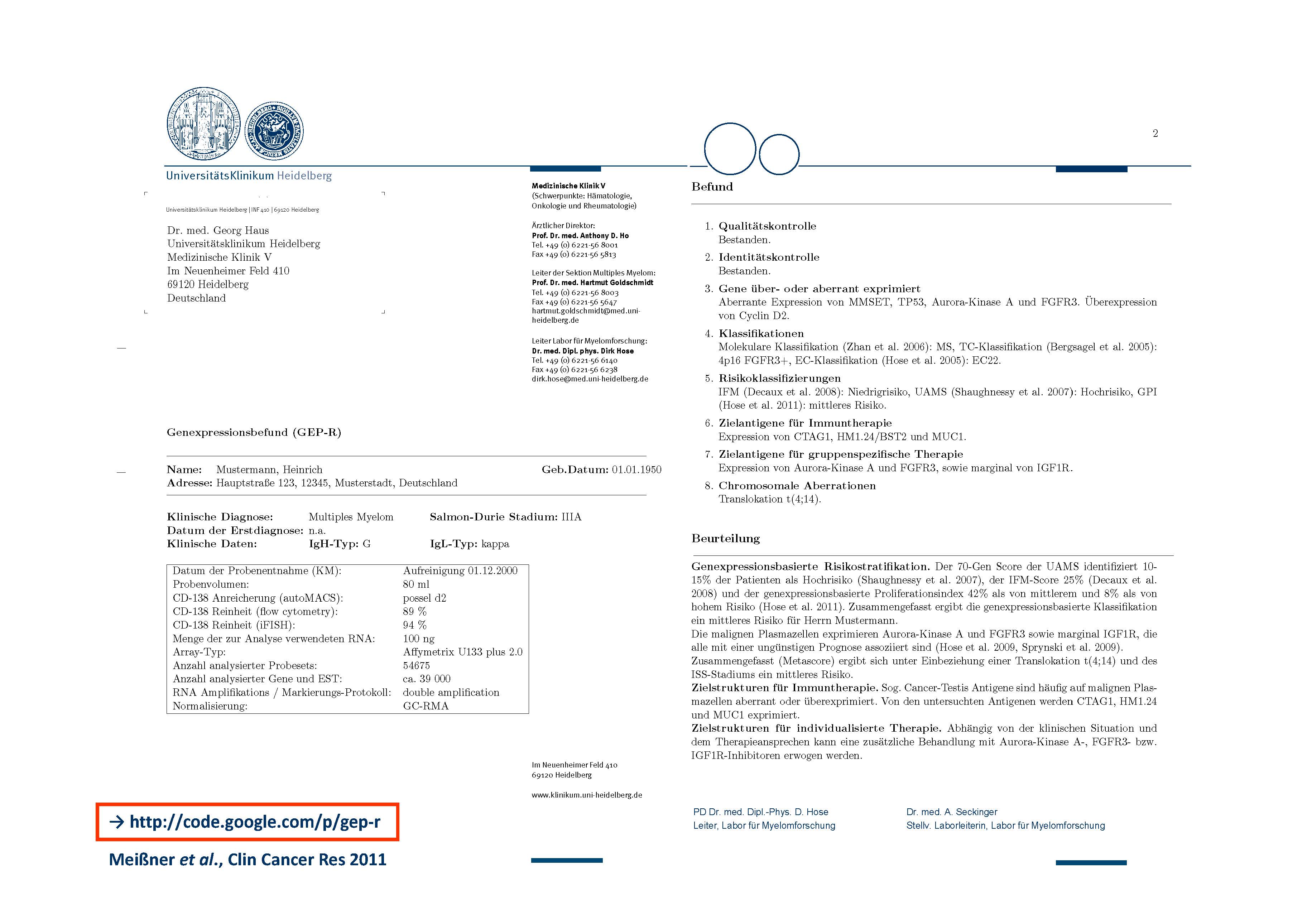SP 3
Transcriptomics by RNA-sequencing: Performing and reporting in clinical routine
Gene expression profiling (GEP), most often using Affymetrix U133 2.0 arrays, allows simultaneously assessing the expression of (almost) all genes, without the need of a pre-selection of interesting genes or regions. GEP is the first “omics” method in multiple myeloma to be used in clinical routine. GEP allows: i) risk stratification by scores basically summing over genes associated with adverse prognosis or assessing genes associated with survival, ii) performing a molecular classification grouping multiple myeloma into different subentities, iii) assessing surrogates of biological variables which in turn might also have prognostic relevance (e.g. proliferation), and iv) assessing expression of potential therapeutic targets (e.g. Aurora-kinase A). GEP can be performed and reported in ≥ 80% of patients in multicenter trials within 4-6 weeks using our (free) open-source gene expression report GEP-R (http://code.google.com/p/gep-r), Fig. 1. RNA-sequencing (RNA-seq) is a novel approach to transcriptome profiling that uses deep-sequencing technologies. RNA-seq has five main advantages over GEP: i) it provides more precise quantification of levels of transcripts without significant saturation effects, ii) it does not prerequisite a priori definition of sequences to be analyzed (as for e.g. Affymetrix “probesets”) and thus allows detection of mutated transcripts (e.g. BRAF-mutations). Likewise, transcripts for which initially faulty sequences have been assumed and thus corresponding probesets do not interrogate the transcript of interest (e.g. ErbB-receptors on Affymetrix DNA-microarrays) can be analyzed. iii) RNA-seq used for expression profiling can be performed successfully from as low input as 1 ng of RNA (compared to about 100 ng for Affymetrix U133 2.0 arrays and a double amplification protocol). iv) RNA-seq enables the analysis of splice variants, and v) allows the investigation of other RNAs (especially small ones, e.g. miRNA).
Research goals of the subproject are i) performing and reporting of RNA-sequencing based assessment of survival, therapeutic targets, and biological parameters in clinical routine based on strategies used within our GEP-R, and ii) assessment of targetable lesions present in a subfraction of patients with the aim of a personalized “add-on” treatment.


Legend: The gene expression report (GEP-R) is a open-source, adaptable software framework which integrates the molecular classifications, risk stratifications, and assessment of target gene expression, e.g. AURKA, FGFR3, IGF1R, or MAGEA3, for risk-adapted and personalized treatment in one report. After performing an identity and quality control check, the report is released as pdf-file. Within the GEP-R, the implemented HM-metascore integrates current expression based and conventional prognostic factors into one superior prognostic classification, thus allowing to give one comprehensive prognostic information in clinical routine.



